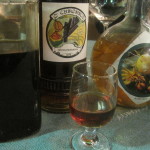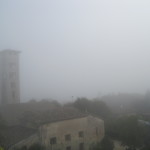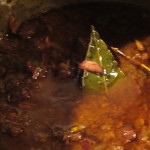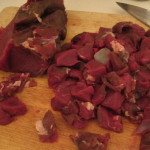 I love the class of drinks known as digestivo’s. The perfect end to a meal, these sweet alcoholic bitters have long been used as a digestive aid in Italy but also throughout Europe, especially Germany. The basic ingredients are an array of medicinal herbs and botanicals that have digestive properties, preserved in alcohol and sugar. The flavor profile is a fascinating complexity of herbal, citrus and bitter tones.
I love the class of drinks known as digestivo’s. The perfect end to a meal, these sweet alcoholic bitters have long been used as a digestive aid in Italy but also throughout Europe, especially Germany. The basic ingredients are an array of medicinal herbs and botanicals that have digestive properties, preserved in alcohol and sugar. The flavor profile is a fascinating complexity of herbal, citrus and bitter tones.
Also know as amaro in Italy, which means “bitter”, these drinks are easy to find and often offered gratis after a meal. Some of the most common are Fernet Branca and Averna, but each region has their own and the best are small batch, artisan products rather than those mass produced on an industrial scale.
Bitter herbs help to stimulate the liver and gallbladder. Distillations and extracts of botanicals have been used for millennium to aid digestion and as medicine and tonic. Italy has a huge tradition of after dinner bitters. After all, the most important thing to an Italian is their digestion and whether the liver is working properly. They believe the proper digestion of food, or lack of it, is the root of a whole host of health problems, and they do everything possible to assure the digestion is working well.
By the way, that’s the reason that cappuccino is never drunk after dinner in Italy: hot milk hinders the digestion of a good meal!
I love tasting and collecting amaros from all over Italy and at last count I had over 30 different bottles! Some of them are hand-made and most of them are not available out side of their production zone.
 Last night we did a small tasting of my vast collection. There were a group of New Yorkers at the Italian Table dinner last night and they were eager to taste and learn about bitters. With the table loaded with glasses and bottles, by the end of the evening each person had developed their own special favorites and left with new appreciation for this delicious and interesting Italian drink!
Last night we did a small tasting of my vast collection. There were a group of New Yorkers at the Italian Table dinner last night and they were eager to taste and learn about bitters. With the table loaded with glasses and bottles, by the end of the evening each person had developed their own special favorites and left with new appreciation for this delicious and interesting Italian drink!




 The Italians have the loveliest way to eat fresh summer peaches: they pick a nice, ripe peach at the end of the meal and slice it into their last glass of wine. Then after letting it marinate for a few minutes, they eat the peach slices. Dinner is over when the last of the wine has been enjoyed.
The Italians have the loveliest way to eat fresh summer peaches: they pick a nice, ripe peach at the end of the meal and slice it into their last glass of wine. Then after letting it marinate for a few minutes, they eat the peach slices. Dinner is over when the last of the wine has been enjoyed.

